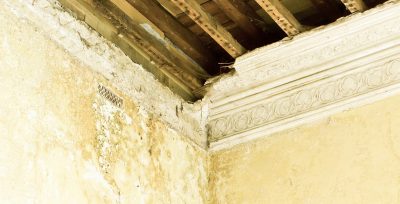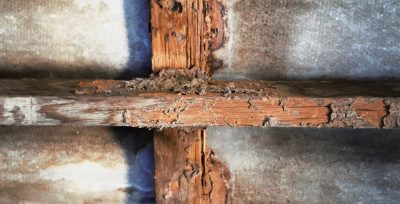What is Rising Damp?
Rising damp is the rising of groundwater through a building’s outer wall by capillary action. Water moves up the walls via tiny crevices in the bricks. Many walls let water to seep through and, without a damp proof course, there is nothing to prevent this from happening. Rising damp also occurs when the ground level outside your building rises above your damp proof course. In this case, the water bridges the DPC to get to the walls.
What Causes Rising Damp?
Many buildings have a damp proof course installed at the bottom of the wall to prevent water from rising. The damp proof course is made of a water-resistant non-absorbent material, like plastic, bitumen or slate. The type of material depends on the period the building was put up.
However, these DPCs fail occasionally and are non-existent in older houses. If there is any indication that your DPC has failed, or you don’t have it altogether, there is nothing preventing water from rising up your wall. Although the DPC can remain intact, it can sometimes be bridged. A fault in construction could result in damp travelling up past the DPC.
Rising and Penetrating Damp Prevention and Treatment Services in London
- 01Rising & Penetrating DampRead more
- 02What Is Penetrating DampRead more
- 03What is Rising DampRead more
- 04Causes of Rising DampRead more
- 05Causes Of Penetrating DampRead more
- 06Symptoms of Rising dampRead more
- 07Symptoms of Penetrating DampRead more
- 08Rising Damp vs Penetrating DampRead more
- 09Stop Penetrating DampRead more
- 10Stop Rising DampRead more
- 11What is a Damp Proof CourseRead more
How do you stop Rising Damp?
There are signs to look out for if you’re worried about rising damp. A major one is a clear band of dampness, staining, and mould growth around the lower section of either your internal or external wall. In the presence of DPC, damp will be visible about one metre above the ground level. Also, you will notice a disruption in the wallpaper and blistering plaster.
At Southern Damp Proofing, we are well equipped to tell whether the damp is from rising damp or another source such as penetrating damp or condensation.
What are the problems caused by Rising Damp?
Rising damp destroys your wall décor, and causes rot in floor joints, skirting’s, wall plates and floorboards. Damage is also caused by the hygroscopic salts in water that crystallise on contact with moist air.
Although the salt in groundwater occurs at acceptable levels, it is deposited in plasters, within the masonry and in decorative finishes.
How do you stop Rising Damp?
The most cost-friendly way is to use Newton 804-DPC to convert the existing course into a new mortar DPC. It is a strong damp-proofing cream that diffuses into the mortar course where it solidifies into a water–repellent block that stops rising damp.
If you have a cavity wall, you will be required to install the DPC on both the internal and external wall surfaces, regardless of the method you employ. The DPC should be applied at least six inches from the ground level, on both sides. If the external wall is higher than the inner floor, you will need to make a trench from the outside so that the DPC is applied at the same level as your inner floor.
All skirting boards around the affected area should be removed before commencing any treatment with DPC. Similarly, contaminated plaster needs to be scraped off to a minimum of about 300mm from the last sign of detectable contamination.
Frequently asked questions about Rising Damp
How much does Rising Damp treatment cost?
Does home insurance cover Rising Damp?
Does Rising Damp smell?
Can Rising Damp be fixed?
What does Rising Damp look like?


